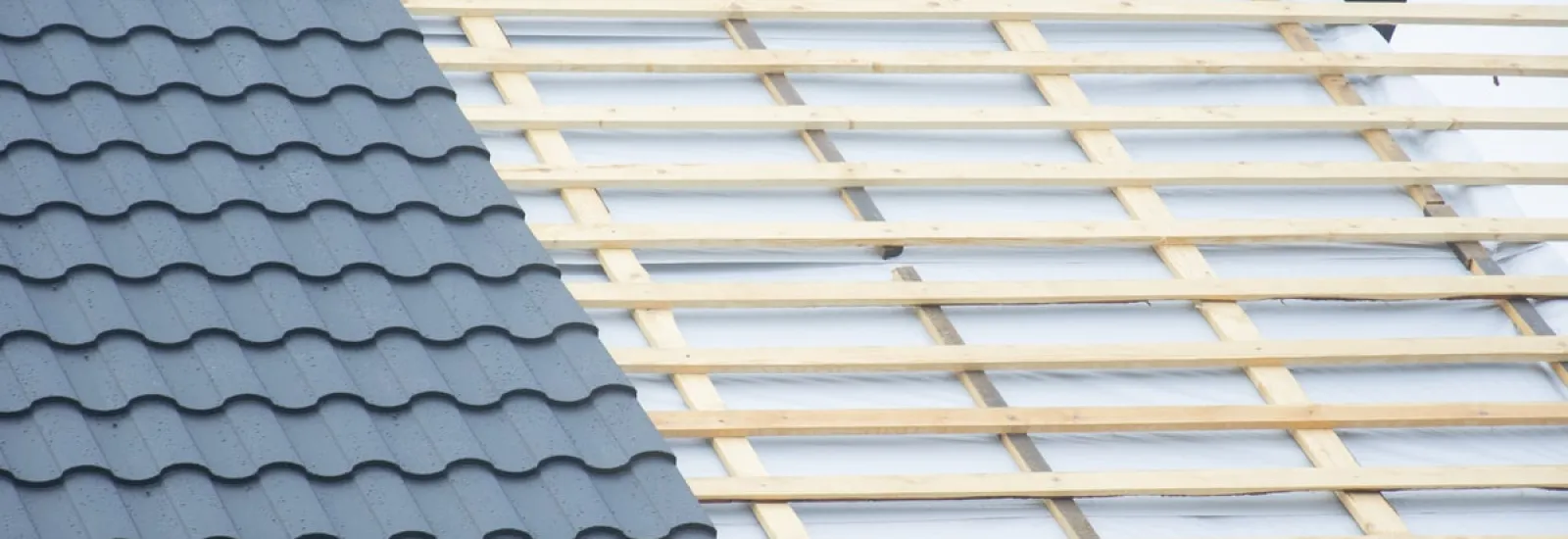Replacing a roof is one of the most expensive home repairs and
maintenance needs you'll ever pay for on a house. But the cost of this project
reflects the importance of a high-quality roof to protect your home from wind,
rain and other outdoor elements.
When it's time to
consider residential roof repair or a full replacement, it can be tempting to
attempt this roof work on your own and lower the costs of a roof replacement.
But if you don't have experience with roofing a house, a DIY approach can
also be risky.
Still trying to
decide? Here's what to consider when your home needs reroofing.
Deciding When to Replace Your Roof
Replacing a roof
is a major investment—and that investment isn't made lightly. While asphalt
shingles are built to last 15 years or longer, any choice of shingle is going to reach the
end of its life expectancy eventually.
The decision to
repair or replace a roof is often an easy one if your roof has developed the
following issues:
- Water leaks. If water is leaking into
your attic or other interior spaces, a leaky roof is a likely cause—and if you
can trace the leak back to the roof, you'll need to fix the issue.
- Bald spots on asphalt shingles. The gritty asphalt exterior that
strengthens your roof and protects your home is bound to deteriorate over time.
When this exterior layer is rubbed off, it will expose bald spots that will be
more prone to water leaking and damage.
- Visible damage from severe weather. Hail and fallen tree branches can strike
your roof and cause damage to both the shingles and, in the case of large
branches, the underlying structure.
- Missing or broken shingles. Missing shingles are likely the result of severe winds—but
they may also be a sign of poor installation.
The Risks of DIY Roof Replacement
While a DIY
roofing project may sound appealing from a cost perspective, there are certain
risks to be mindful of when considering this option. Some of these risks could
even lead to added long-term costs that push the total cost of a roof
replacement beyond what you would have paid professionals. These common risks
include:
- Incorrect installation. When a non-professional installs your
roof, you're at a greater risk of leaks, lost shingles, and other problems
resulting from poor installation.
- Worker safety. Whether it's you or other help on your
roof, non-professionals are more likely to fall and/or become injured on the
job.
- Voided warranties for roofing materials. Many roofing materials, including
shingles, come with warranties that are only valid when installed by a
professional. If you opt for a DIY roofing job, you could void those warranties
and be out of luck if those materials develop any issues.
- Potential insurance claim denials. If you file a claim on your roof in the
future and your insurer finds out the roof was installed by you, and not a
professional, they could deny your claim and even cancel your policy.
The Benefits of Professional Residential Roofing Replacement
While a
professional installation helps you avoid all of the aforementioned risks of
DIY projects, homeowners can also have peace-of-mind that their roof has been
properly installed to maximize its lifespan and its protective qualities—and
that, if problems arise in the future, they have someone they can call for
help.
In addition,
professional roofers can also help you choose the materials and colors you want
for your home, guiding you through your options and helping you understand the
features of each roofing material, as well as its impact on your budget.
Finally, in cases where you aren't sure whether you can repair a portion of
your roof, or if the full roof needs replacement, a professional roofing
company can evaluate the damage and help you understand the pros and cons of a
partial repair versus a full replacement.
How to Pay for a New Roof
Most homeowners
can't afford the full cost of a new roof out-of-pocket—especially if this
expense catches them by surprise. Fortunately, you may have multiple options to
afford a new roof immediately, even if you lack the cash to foot the bill.
The first place
to start is with your insurance company. Depending on whether any damage is
found on your roof, you may be able to get a portion of the roof replacement
cost, or even the full cost, covered by insurance after paying your deductible.
This can be the most affordable option for paying for a new roof.
You can also look
into home improvement loans or personal loans to cover this large expense
through financing at a competitive rate. Many roofing companies also offer
financing and/or payment plans to help their customers afford a roof replacement.
Once you get a quote from a roofing company, ask about their financing and/or
payment options to find the best option for affording a new roof.
While DIY roofing
may seem like a viable option for saving money on a major home expense, the
reality is that a DIY approach doesn't save you nearly as much as you might
hope for in the long run—and it could cost you significantly if your roof runs
into any problems. Invest in your home and your own sense of security by having
your home reroofed by a trusted local roofing company.
